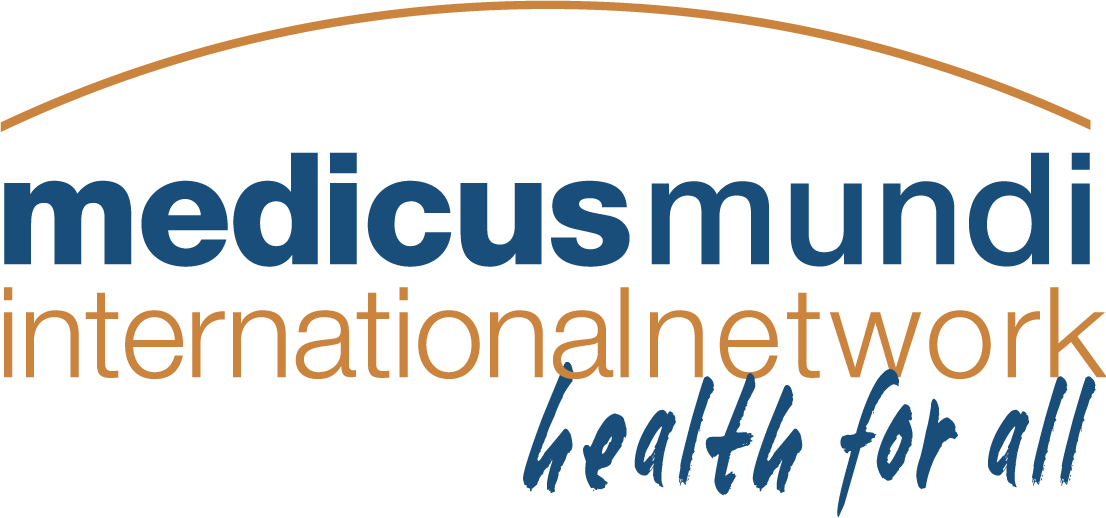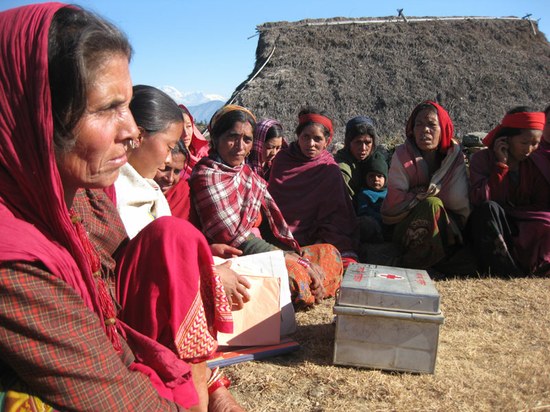The core aim of the Swiss Red Cross (SRC) health projects is to enable equitable access to quality health services, particularly for the most vulnerable. While regular evaluations confirmed improved access during project implementation, the long-term effects after SRC phase out have never been reviewed. An analytical review of selected health projects was commissioned in 2014/2015 to two consultants to understand the long-term impact of SRC interventions on equitable access two to five years beyond project termination.
Five country reviews were conducted in Laos (Health Financing; since 2002 ongoing SRC support), Cambodia (Quality of Primary Health Care from 2004-2011), Bolivia (Health Promotion and Empowerment from 2002-2012), Ghana (Eye Care from 1996-2006) and Nepal (Community Health from 2005-2012) between July 2014 and January 2015. A common methodology based on selected OECD/ODAC evaluation criteria and the framework of access to health care developed by Levesque et al. (2013) was used. The Levesque framework describes access barriers from the health provider side and the demand side and analyses the corresponding abilities to overcome the respective access barrier. Semi-structured interviews were held with local authorities, service providers, beneficiaries and SRC local delegations. Information was triangulated with secondary data from previous project reports and evaluations, the local Health Information Management Systems, as well as from transect walks and observation.
A meta-analysis of the individual country reviews was conducted and results grouped by the five pairs of dimensions of accessibility associated with the service provider and the health system users. A sixth dimension of “support to community based prevention and promotion” paired with “ability to prevent ill health and improve well-being” was added, which is specific to the SRC approach. It is important to note that dimensions also overlap and influence each other.
Preventive community actions may not relate directly to access per se, but impact on the need for individuals, families and communities to seek and pay for care. Health promotion, health education and working on determinants of health have improved health behaviour and practises and well-being (e.g. reduction of diarrhoea in children because of access to safe drinking water). However, only where Governments acknowledge its impact on health, health promotion will become an inte-gral part in public health services. Where synergies and inter-dependence with other projects, pro-grammes and partnerships was created and still remains functional, a greater impact, effectiveness, scope and sustainability of multiple approaches is assured.
Approachability of services and communities’ ability to perceive care
Establishing community groups and local “champions” for certain health topics as well as conducting outreach services has positively influenced health information, perception and health care seeking during and to some extend also beyond project duration. Communities are better informed and a change of traditional beliefs and health practises is observed. However, maintenance of community groups after project completion is challenging and fragile and depends on organisational capacity-building and the establishment of sound funding mechanisms to sustained functioning and motivation of group members. Likewise, outreach services are generally poorly maintained after phase-out because of high costs and thus limit the access to care and information particularly for the rural poor.
“I have referred several people to an eye doctor. I am the action member on eye care in our community. People come and ask me for advise and where to go.” (A community group member in Nepal)
Acceptability of services and ability of individuals to seek care
SRC project approaches that integrate traditional practitioners into the formal health sector with enabling roles, reduce conflicting beliefs among communities regarding the formal and informal health systems on offer. In addition to context-appropriate human resourcing (local staff with a common language for example), integration of traditional medicine and care practises as well as patient-centred care enhance longer-term sustainability in health system access and use by marginalised and poor community members. Acceptability is fostered where health workers serve their own community and when Government policy supports staff retention with low job rotation.
“When I go for delivery, I can choose between our traditional birth-giving or the “Western style. I am delivering at the health center now, because I can do it our traditional way”
(A mother in Bolivia)
Service availability and accommodation and communities’ ability to reach care
Project objectives were better attained when a “light” health facility support was included. However, only projects which enabled a certain financial autonomy of the health facility or where external donors other than Government chipped in (e.g. religious organisations), this support could be maintained. Incentive payments on staff and overall facility performance are highly effective in raising professionalism related to strengthened service quality and reliability. Financial support that addressed opportunity costs associated with accessing and taking up health care (e.g. transport, food and accommodation) enhances access. When direct payment of transport is not sustained post-project, there is a rapid decrease in the ability of the rural, remote and poor population to reach services.
“Our work is still based on performance and we receive a bonus from the Government. Even though the Government does not continue with the same top-ups as during the SRC project intervention, we are still happy and continue our work in good quality” (Health provider Cambodia)
Affordability of services and the ability of people to pay
Financial enabling mechanisms such as free health benefit packages, health equity funds, transport payments and community-managed revolving safe motherhood funds had strong impact on access to care, particularly for the rural poor. Continuing these mechanisms depends on the ability of projects to influence policy level on the one hand and to create sustainable pro-poor business models which can be handled by the local communities on the other hand. Where mechanisms continue, patient co-payments are reduced and catastrophic health expenditure are averted. In projects where these mechanisms collapsed, the profile beneficiaries shifted from the project’s rural pro-poor focus, to one where the majority of users are from the urban middle-class.
“I use my own money to pay volunteers to keep working and bringing patients to the clinic, so that they can get services” (eye care provider in Ghana)
Appropriateness and ability of communities to engage
Except of outreach services, in all projects health care services continue to function well and health care utilisation is steadily on the increase. Projects and services, which initially registered a dip in patient load, picked up services and work load over a certain period of time. Adequate job descrip-tions and human resource policies, trainings and financial incentives increase the bonding of the service providers to their facility which in turn increase quality and continuity. Community groups have an important role to play in creating demand and ensuring that health systems provide the most appropriate services with which communities can optimally engage. Therefore enhanced roles of community groups in M&E and feedback to health services might not only ensure the appropriateness of service provision for community needs, but also acts to maintain service accountability to users after project completion.
The review found that all projects have improved access to quality services on the long-term by strengthening quality of health services and enhancing community’s engagement in health. However, access to the poor and remote population seems to have declined again in those cases, where investments and health financing was not sustained. Two over-arching features which impact on the sustained access to health services found in the review were i) the effectiveness of SRC establishing strong partnerships with regional and central government and influencing local health policies; and ii) the potential of SRC adopting in some cases a stronger business model and sustained ownership of its investments post-completion in order to maintain aspects of access to health which are poorly taken up by national authorities. These include elements such as transport, direct and indirect costs and outreach service funding, autonomous health facility budget, supervision and motivation of community groups and “champions”. The maintenance of these elements are pivotal to sustained access of the rural and remote poor. The findings and lessons learnt will be integrated in new project designs. In the future, monitoring and evaluation shall make more use of disaggregated data trying to better understand, create, test and adapt access mechanism to make them more sustainable for the poor within SRC’s broad portfolio in very diverse cultural, economic and geographical contexts.
- Study undertaken by Dr. Kate Molesworth (Swiss Tropical and Public Health Institute, Basel) and Dr. Walter Flores (Center for the Study of Equity and Governance in Health Systems, Guatemala City)
- www.redcross.ch/de/das-rote-kreuz-handelt-global
Contribution by the Swiss Red Cross (member of Medicus Mundi Switzerland) to the Annual Report 2015 of the MMI Network

